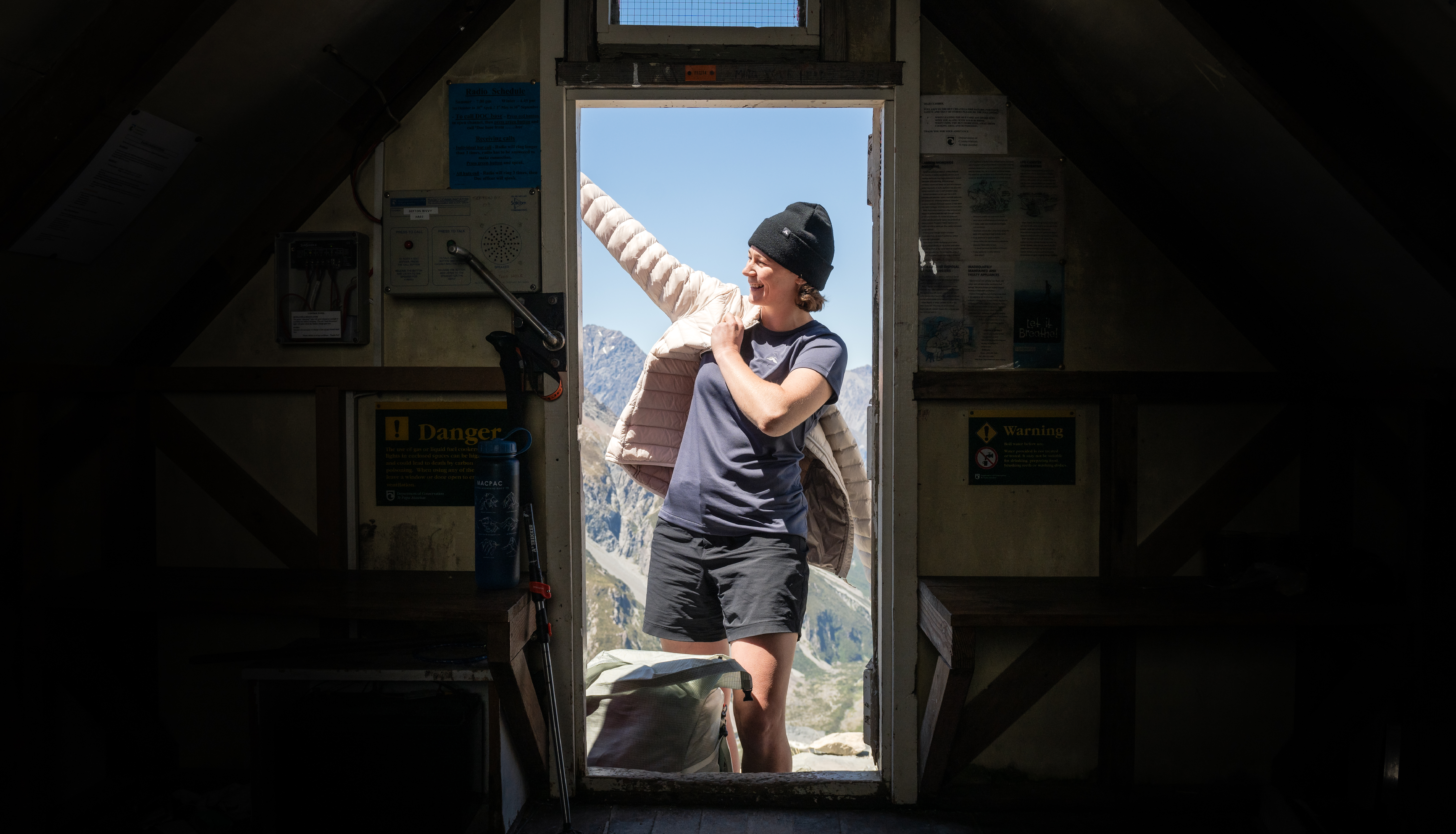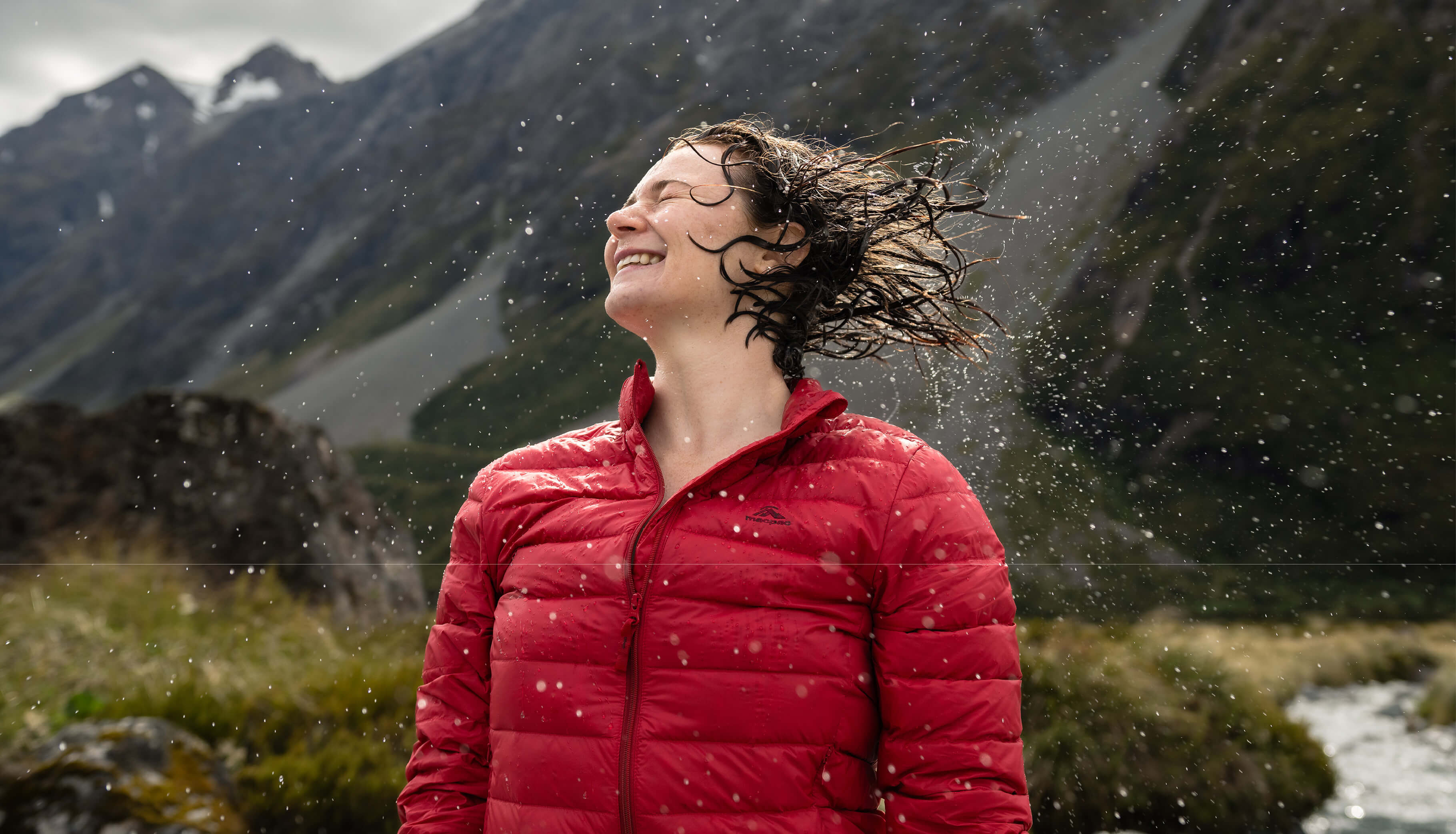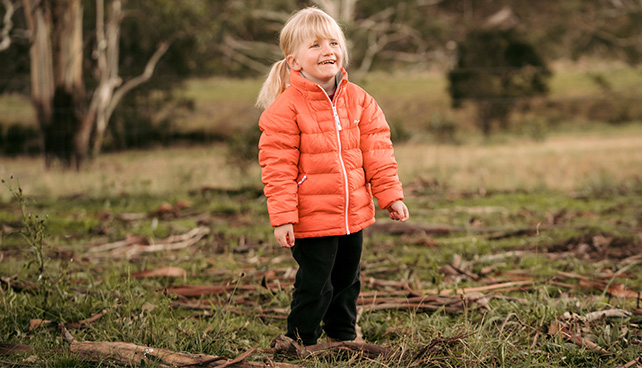
Whether you simply want a jacket to keep you cosy on your morning commute, or you're after a high-performance jacket to battle the elements on a winter expedition, there are a few things you should consider before investing in a new puffer jacket.
Not all puffer jackets (or insulated jackets ) are created equal, and each type is designed to serve a different purpose. Here at Macpac, we have two kinds of insulated jackets: down or synthetic. There are pros and cons of each. But what you should ultimately choose depends on what you plan on doing in it.
Down Insulation
While all technically do the same thing (keep you warm), not all insulation is created equal.
Duck vs. Goose Down
- Duck Down – Excellent warmth-to-weight ratio at varying levels of performance.
- Goose Down – Considered the gold standard for insulation due to its superior durability and warmth.
ALLIED Feather + Down HyperDRY Down
- HyperDRY is a fluorocarbon-free water-resistant treatment developed by ALLIED Feather + Down. This treatment keeps down dry for longer in wet weather, helping it retain loft and dry faster than untreated down.

Benefits of Down Insulation
High quality duck and goose down offers the best warmth-to-weight ratio of any insulation. It works by trapping body heat inside thousands of tiny pockets of air, making it perfect for puffer jackets and sleeping bags because it can easily be compressed into small spaces for packing.
Downsides to Down Insulation
Down doesn’t perform well when it gets wet – full stop. The plumules (feathers) clump together and lose their ability to loft (puff up).
One way we get around this is by using water-resistant ALLIED Feather + Down HyperDR down. Although it’s not completely waterproof, this down is treated with a PFC-free compound that acts in the same way a water repellent does; using a short chain of molecules that encourage water to bead and roll away, providing greater water resistance and faster drying times.
There’s also the question, “why don't you just use a waterproof fabric?” But because each baffle needs stitches to hold down in panels across your body, each stitch creates a tiny hole that water can get into. Until now. Shop waterproof down.
Pros & Cons of Down Insulation
Pros:
- Performs well in cold, dry conditions
- Superior warmth to weight ratio
- Highly compressible and packable
- Moulds to your body shape for a comfortable fit
- Natural fibre
Cons:
- Loses the ability to insulate when wet
- Special cleaning requirements
- Slow drying time
- More expensive than synthetic
- Not hypoallergenic

Synthetic Insulation
Macpac’s synthetic options replace goose or duck down with PrimaLoft®, an ultra-fine polyester microfiber blend. PrimaLoft® fibres are treated so that they don't retain water, which is why they are able to keep you warm no matter how hard it pours. Similar to down, it works by trapping heat in tiny air pockets.
Types of PrimaLoft® Insulation
- Gold - Made from recycled content. The go-to choice for protection in extreme conditions.
- Silver - Made from recycled content technology with a proprietary water-repellent treatment.
- Black - Made in different blends to balance the warmth and packability of lifestyle pieces.
- ThermoPlume® - This game-changing fill turns synthetic fibres into silky plumes that resemble the warmth, softness, and compressibility of down.
- P.U.R.E™ - This unique manufacturing process, developed by PrimaLoft®, has transformed the manufacturing of synthetic insulation to drastically reduce the carbon emissions produced.

Benefits of Synthetic Insulation
PrimaLoft® is incredibly soft, light and warm. It also retains most of its insulating ability when wet. This makes it a better option if you’re expecting moisture, or if you’re adventuring above the snowline.
If ease-of-care is also important, it’s worth considering a synthetic option.
Downsides of Synthetic Insulation
Unlike traditional down jackets, synthetic puffers aren’t overly compressible, so they won’t pack down as well as a down jacket. They also aren’t quite as warm as premium down-filled jackets.
Pros & Cons of Synthetic Insulation
Pros:
- Retains insulating ability in wet, damp conditions
- Fast drying
- Easy to care for
- Hypoallergenic
- Vegan alternative
Cons:
- Warmth-to-weight ratio is lower compared to down
- Less compressible
- Slightly heavier than down

Measuring The Warmth of an Insulated Jacket
When comparing the warmth of down jackets, there’s a lot to consider: there’s fit, baffle design and length, just to name a few. At the end of the day, it’s always going to be a trade off between warmth and weight, so before anything else, you need to consider the activity you’ll be using your jacket for most. Here, we are going to focus on two factors.
Understanding Fill Weight & Loft Rating
It is the combination of fill weight and loft (down quality) that determines how warm a jacket will be.
Loft
Loft (or fill power) is one measure of down quality. It’s the space in cubic inches that an ounce of down will occupy, and the measurement takes the form of a number – think 600, 750, 800 etc. Macpac down jackets use high-quality goose and duck down with fill powers ranging from 600-800. The higher the number, the more effective the insulation.
Fill Weight
Fill weight is the actual amount of down (in grams) inside the jacket. For example, an 800 loft down jacket would be warmer than the same jacket made using 600 loft down, because the higher lofting down means it has a greater warmth-to-weight ratio. However, if it’s compared to another jacket with less loft but more fill, it won’t be the warmer option.
Our Sundowner jacket is a prime example of this. It uses 600 loft down, but because it has 205 grams of fill it’s technically warmer than an 800 loft Icefall — filled with 95 grams (mens) or 88 grams (womens) of down respectively. The trade off, of course, is that the Sundowner is heavier and less packable.
Outer fabric
It’s not just about the insulation itself, but also what it’s encased in. The outer fabric has a lot to answer for – it dictates the entire garment’s performance from durability and warmth, right through to weather resistance.
We use a range of fabrics on our insulated jackets. Our outdoor essentials collection will generally feature classic 100% Nylon Taffeta as found in our Halo and Uber Light Jackets. This is for a more classic look, best suited for wear around town and designed specifically to handle the wear and tear of daily life.
Our technical garments use performance outer fabrics by Pertex®. Jackets like the Sundowner are designed for maximum warmth, weather resistance and durability at minimum weight for harsh environments.
If you’re still unsure about which insulated jacket is the right choice for you, head in store and talk to an expert! Knowledge is power, and they’re more than happy to show you what we’ve discussed. Arm yourself with the tools to make an informed purchase and you’ll be ready to take on the elements for many winters to come.



